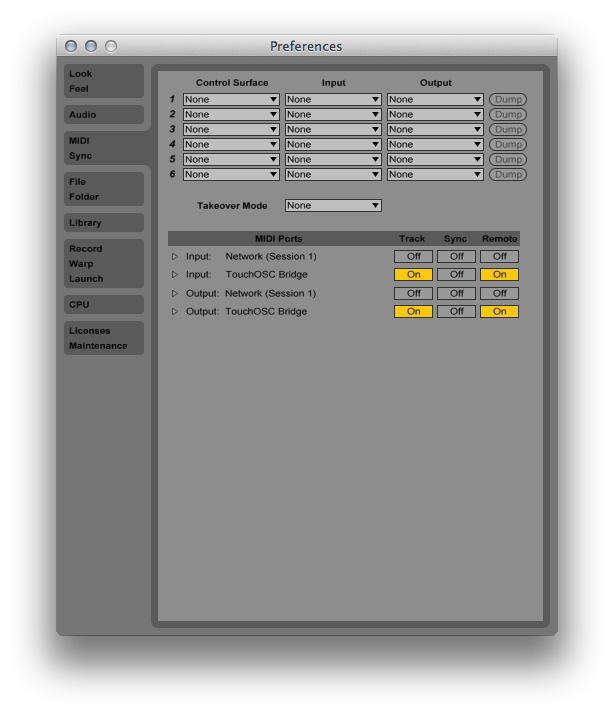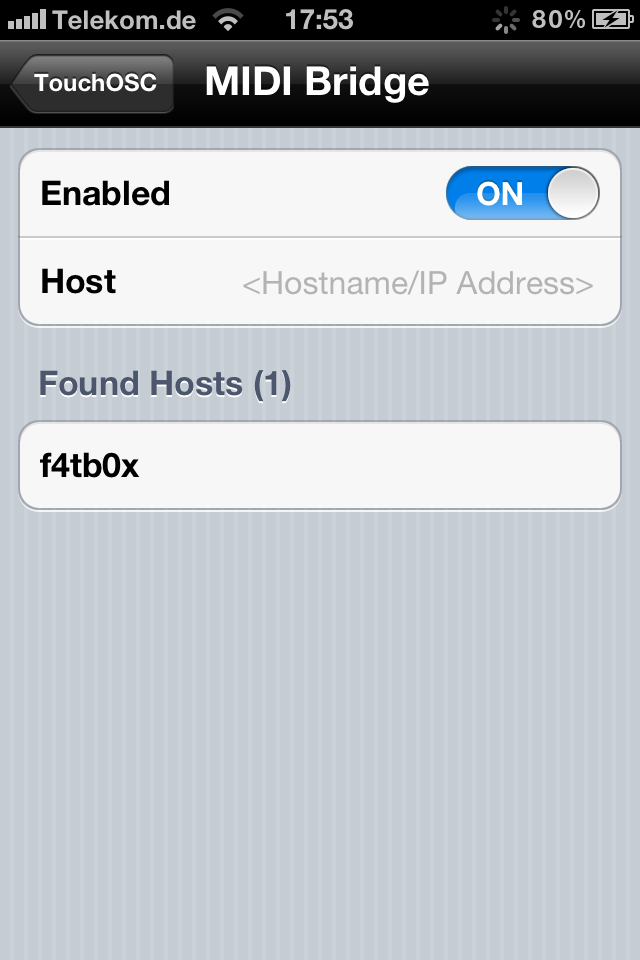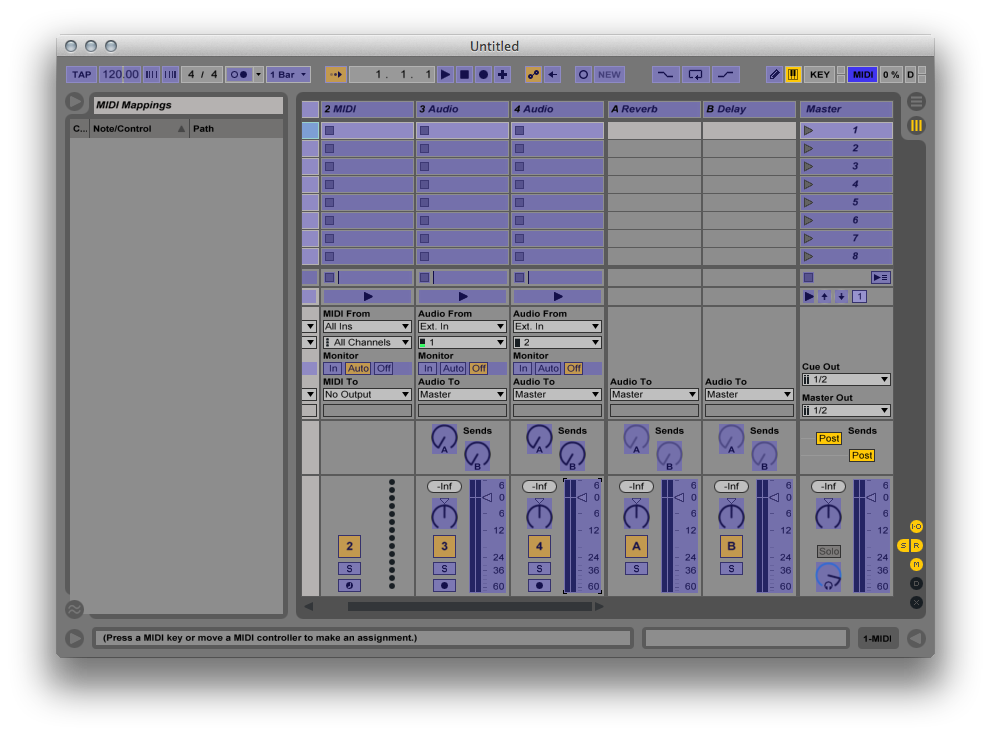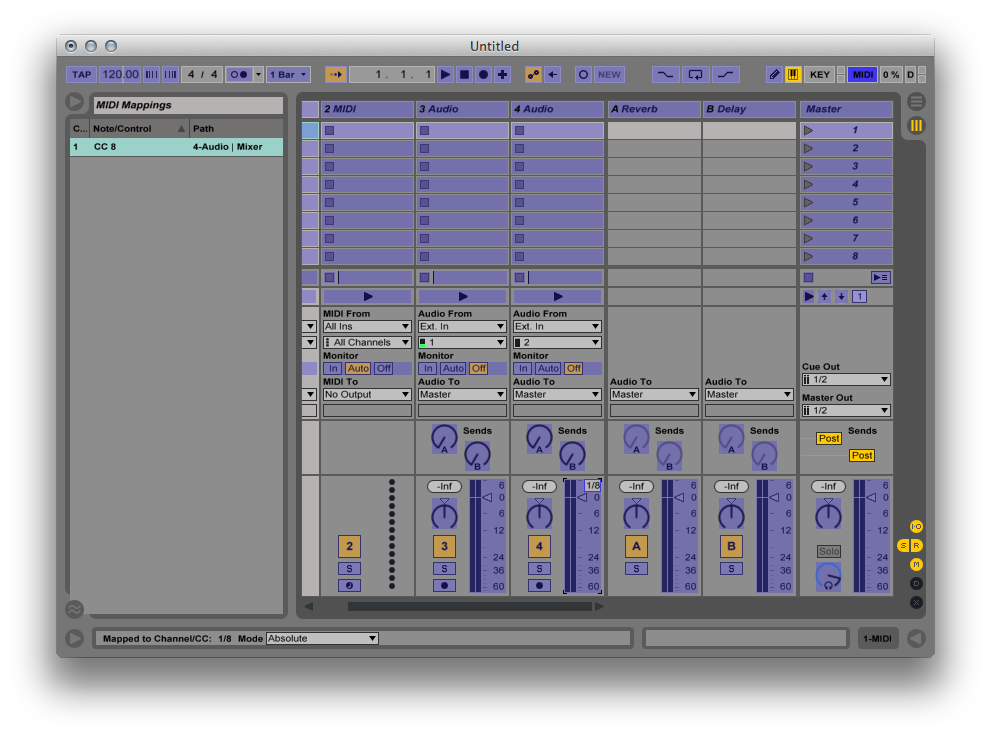MIDI with TouchOSC Bridge
Now we'll setup the TouchOSC Bridge utility application to relay MIDI messages from and to TouchOSC.
Please note that any kind of firewall or security software running on your computer can be an absolute show-stopper when it comes to network communication, so if you have no success with the following steps, please try to disable those kind of applications temporarily and try again.
Install TouchOSC Bridge
- First go to the TouchOSC page's resource section and download TouchOSC Bridge for your operating system
- Next install TouchOSC Bridge:
- Mac
Open the downloaded dmg archive and drag the application (.app) bundle to your Applications folder
- Windows
Run the downloaded installer and follow the instructions.
- Mac
Running TouchOSC Bridge
- Mac
Double-click the application (.app) bundle in your Applications folder
- Windows
Find and run TouchOSC Bridge from the Start menu.
The application tries to stay out of your way as much as possible, so the only visual feedback it provides is to add an icon to the Menu-bar (macOS) or Task Tray (Windows) respectively:

PLEASE NOTE that to do its job of relaying messages to and from TouchOSC on your mobile device, TouchOSC Bridge HAS TO BE RUNNING!
When launched the application creates two virtual MIDI ports on your system named TouchOSC Bridge, one for receiving MIDI messages sent from, and one for sending messages to, the TouchOSC app.
Using these ports any MIDI-capable application should be able to send and receive MIDI messages to and from the TouchOSC app. To learn how to configure TouchOSC to send and to react to MIDI messages in detail, please see the chapter on Editing Layouts.
To quit the application click/right-click the icon and select Quit from the contextual menu:

Configure TouchOSC
TouchOSC Bridge is now ready to receive MIDI messages from TouchOSC. We'll now setup TouchOSC to send some MIDI messages.
- Make sure both your computer running TouchOSC Bridge and your device with TouchOSC installed are connected to the same network.
- Start TouchOSC on your device.
- Select the row in the Layout section, and on the following screen select the row titled Simple. This layout (as well as most other stock layouts) already has default MIDI messages configured. To see which MIDI messages and to change these, please see the chapter on Editing Layouts.
- Now select the row in the Connections section starting with TouchOSC Bridge. You should see the screen pictured to the right.
- Select your computer's name from the list of Found Hosts.
- (If for some reason your computer cannot be found automatically, you will need to enter the IP address of your computer in the Host field on this screen. Please refer to the recipes in the Appendix as to how to find your computer's IP address).
- Back on TouchOSC's main configuration screen, press the Done button.
- You are now presented with TouchOSC's control surface view, and when using any of the controls on screen, TouchOSC Bridge will be receiving MIDI messages from TouchOSC.
Example Ableton Live Configuration
As an example of how to set up MIDI communication with TouchOSC Bridge, we'll configure Ableton Live to use TouchOSC Bridge's input and output ports.
Open Ableton Live's Preferences Dialog, select the section labelled "MIDI / Sync" and enable the Track and Remote columns for the MIDI Ports labelled TouchOSC Bridge:

Now Ableton Live is receiving and sending MIDI messages through TouchOSC Bridge. To confirm this, move or press any control in TouchOSC's Simple layout (which we loaded in earlier steps) and you should see the tiny light in the very top-right corner of Ableton Live light up whenever you do so:

Enter Ableton Live's MIDI Mapping mode by pressing the button labelled MIDI, also in the top-right corner. This will highlight all elements in Live's UI that can be assigned to MIDI controllers with a blue overlay. Select one of these elements, such as one of the Audio-channel's volume faders, and the next MIDI message received by Live will then be assigned to this UI element.
Move or press any of the controls in TouchOSC and you will see that Live will add a row to the MIDI Mappings window, and will add another overlay right above the selected UI element displaying details about the MIDI message, such as channel and type.
The element is now mapped bi-directionally between TouchOSC and Live. You can now exit Live's MIDI Mapping mode by clicking on the MIDI button in the top-right corner again and start controlling Live with TouchOSC! For more info on configuring Ableton Live please refer to Ableton's official manual.
Even though we were using Ableton Live in this example to show how to use TouchOSC to create a bi-directional MIDI-mapping, other applications can usually be configured in a similar fashion. Please refer to your application of choice's manual, specifically the MIDI mapping section, to find out how you can use TouchOSC Bridge and TouchOSC to build your own custom MIDI controller!



